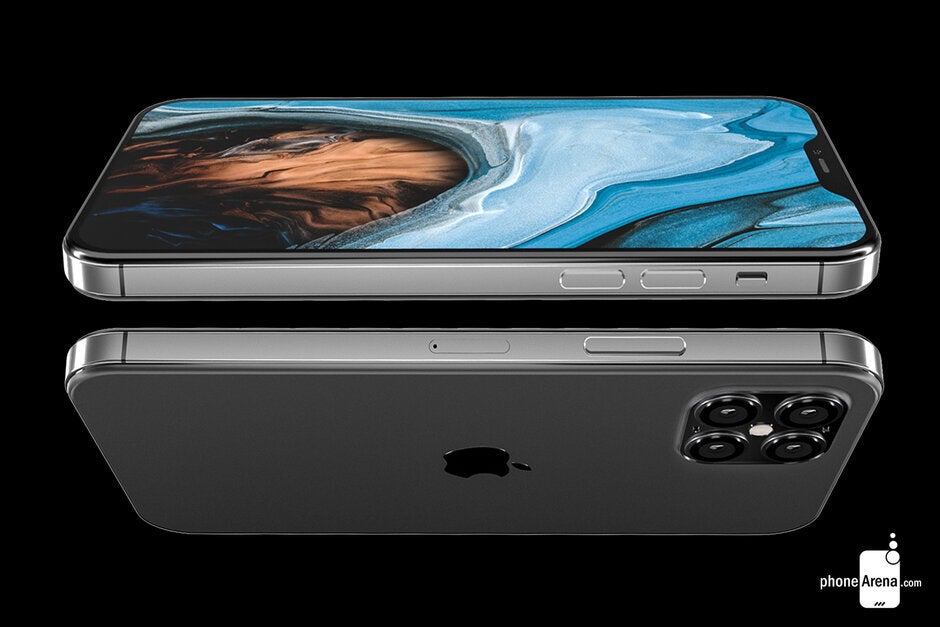Move by Apple's top supplier means 5G iPhone 12 production is ready to begin

You know that we are getting closer to the introduction of the 2020 5G Apple iPhone 12 models when the tech giant's top assembler starts a hiring drive. And according to Tencent Tech (via AppleInsider), the contract manufacturer's main production facility in Zhengzhou has sounded the alarm for more assembly line workers. The number of employees in the plant will grow to close to a million people once the new workers are hired. As a comparison, consider that during the off-season the number of employees in the factory can be as much as 20% to 80% less.
Foxconn will have nearly one million workers in its Zhengzhou facility building handsets
Current Foxconn employees can collect a nice chunk of change by recruiting new employees. The bonus amount comes to 9,000 Yuan (equivalent to $1,290 USD) for each able-bodied person who ends up working at Foxconn. This year, the recruitment drive is starting later than normal most likely because of the pandemic which really hit Apple hard at the supply chain level. Last year Foxconn started putting the fishing nets out in July. The delay dovetails with the comments made by Apple CFO Luca Maestri at the end of last month. During the company's latest quarterly conference call, the executive said that the release of the 2020 iPhones will be delayed by a few weeks. That could mean that the phones won't be available to purchase until October or November.

Render of one of the 5G Apple iPhone 12 models shows the return to flat sides for the iPhone
The latest rumored timeline calls for a late September unveiling of the four new models followed by the launch of the 5.4-inch iPhone 12 and 6.1-inch iPhone 12 Max one or two weeks later. A few weeks after those two models become available for purchase, we should see the 6.1-inch iPhone 12 Pro and the 6.7-inch iPhone 12 Pro Max hit the shelves. The staggered releases shouldn't have an impact on iPhone sales this year. Those looking to purchase one of the more expensive units will have to resist the temptation to buy one of the non-Pro models just so they don't have to wait the additional two weeks for the iPhone that they really want.
The first thing that you'll notice about the 2020 iPhones is the new/reused design. Since the iPhone 6 was launched in 2014, the iPhone's design has included rounded sides. But with this year's handsets, there will be a return to the flat sides found on 2010's iPhone 4 through 2013's iPhone 5s. What you won't be able to see is the 5nm A14 Bionic chipset that should power this year's devices; each one will contain 15 billion transistors allowing it to deliver improved performance while sipping from the battery as if it were a cup of scalding hot tea. In fact, moving to the 5nm node is giving Apple the confidence to reduce battery capacity on the 2020 handsets even though 5G connectivity requires more power from the phones. If Apple takes a step backward in battery life after taking a huge leap forward last year, the manufacturer will get an earful from the fans.
Analysts say that Apple will hold off on offering a faster refresh rate for the 2020 iPhone models
The standard iPhone models will supposedly be equipped with 4GB of memory while the Pro units will sport 6GB of RAM, a record high for iPhone memory. And for the first time ever, Apple will reportedly give the base models 128GB of storage. The iPhone 12 and iPhone 12 Max are supposedly going to feature Wide and Ultra-wide cameras while the Pro units will add a telephoto camera with 3x optical zoom. The LiDAR depth sensor might be limited to the pricier phones; using time-of-flight technology, the sensor calculates improved depth measurement figures delivering better AR capabilities and enhanced bokeh blurs for portraits.
While some analysts swear that the iPhone 12 Pro models will feature the iPadPro's 120Hz ProMotion refresh rate for smoother scrolling and better video game animation, other analysts say that Apple will stick with the old-school 60Hz refresh rate this year. All four iPhone models are expected to support both sub-6GHz and mmWave 5G signals. The former is the technology favored by T-Mobile and AT&T for their nationwide 5G networks while the latter is favored by Verizon. The low-band 5G airwaves travel farther and penetrate buildings better. The high-band spectrum can only go short distances and has trouble penetrating structures. However, mmWave produces much faster 5G speeds.
So now it seems to be just a matter of the clock counting down. And as we get closer to the unveiling, we should see more and more information and images leak. Stay tuned!










Things that are NOT allowed: